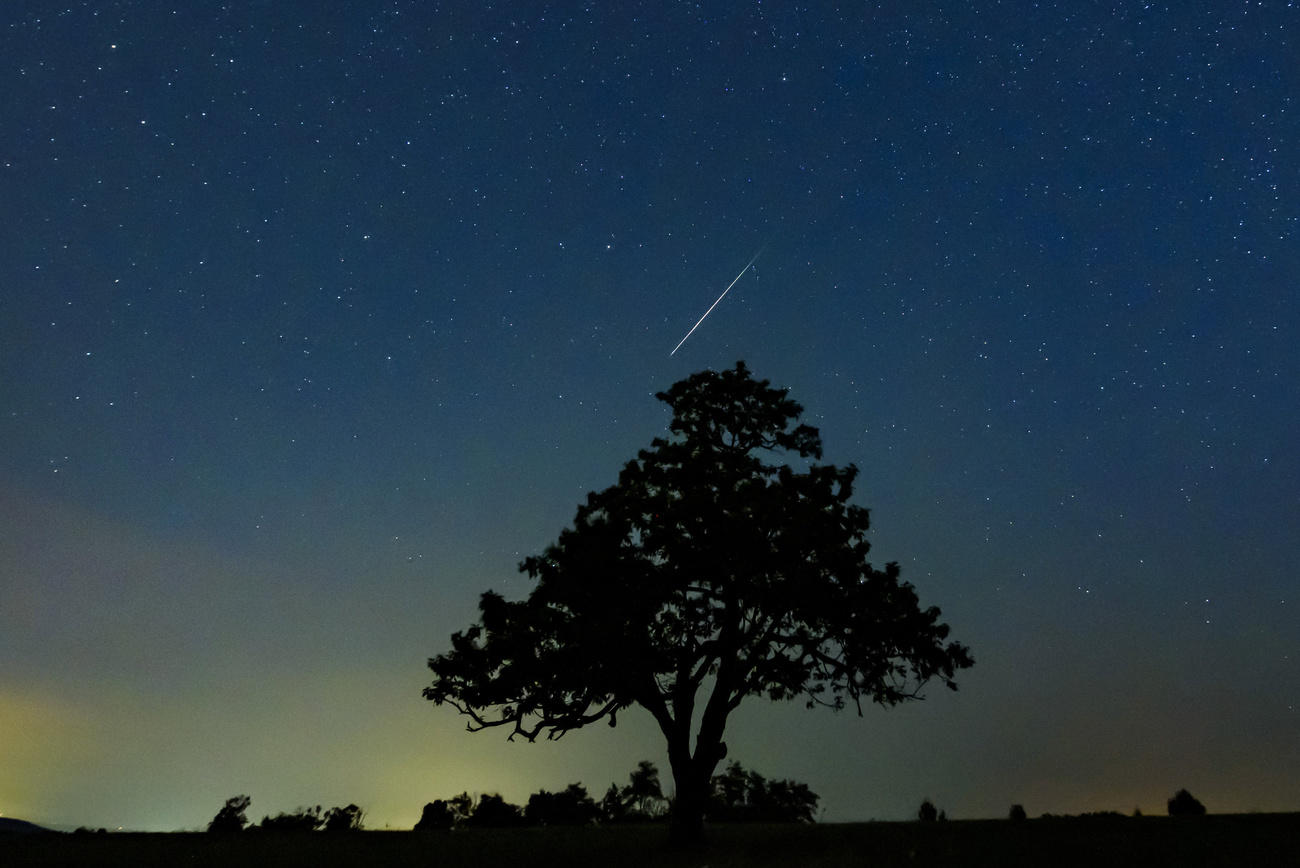
Meteorite contains oldest material on Earth

Swiss researchers have helped determine that stardust from a meteorite is seven billion years old. This is the oldest solid material ever found on our planet.
The analysis of the meteorite’s grains was carried out at the Swiss Federal Institute of Technology Zurich (ETH ZurichExternal link). Its Department of Earth SciencesExternal link is home to a one-of-a-kind measuring instrument, the “Tom Dooley” mass spectrometer.
Why Tom Dooley?
For technical reasons, the instrument used to hang from the ceiling, the ETH Zurich explainsExternal link. It was therefore nicknamed “Tom Dooley” after the alleged murderer who was hanged in the United States in the 19th century and immortalised in a folk song.
This was specifically designed to measure the smallest amounts of gas and is the only instrument in the world that can measure noble gases in individual presolar grains.
These grains, dust pitched into space after stars died, were formed before the Sun was born. The stardust became trapped in meteorites which they remained unchanged for billions of years, “making them time capsules of the time before the solar system”, as the ETH Zurich said in a statement.External link
Murchison meteorite
Presolar grains are extremely rare, but some have been found in the Murchison meteoriteExternal link that fell 50 years ago in Australia. The Zurich team worked together with researchers from Chicago’s Field MuseumExternal link, which owns the largest portion of the Murchison meteorite, and the University of ChicagoExternal link, which isolated the presolar grains for the study about 30 years ago, to examine the grains more closely for their age and origin.
Leading the research was Philipp HeckExternal link, a curator at the Field Museum and associate professor at the University of Chicago, who did his doctorate at the ETH Zurich. The conclusion: the stardust formed five to seven billion years ago.
The results of the study have been publishedExternal link in the latest edition of the US journal Proceedings of the National Academy of Sciences (PNAS).
‘Astral baby boom’
Researchers were able to determine the age of the presolar grains by measuring their exposure to cosmic rays. Most of the grains were found to be 4.6-4-9 billion years old, but some grains were even older, at 5.5 billion years old. That’s older than our Sun (4.6 billion years old) and the Earth (4.5 billion years old).
As the grains were formed when a star dies, they reveal much about the history of stars. Heck said there must have been a sort of “astral baby boom” about seven billion years ago.
“We counted more young grains than expected,” said Heck in the statement. He therefore suspects that the majority of the grains with an age of 4.6 to 4.9 billion years came from stars that were born about seven billion years ago in a period of increased star births and reached the end of their lives about two billion years later.
Scientific debate
The finding fuels the scientific debate about the rate at which new stars form. “Some people think that the star formation rate of the galaxy is constant,” said Heck. “But thanks to these grains, we now have direct evidence for a period of enhanced star formation in our galaxy seven billion years ago with samples from meteorites. This is one of the key findings of our study.”
Heck worked on his doctorate with Rainer Wieler at the ETH Zurich from 2002 to 2005 and has long-standing collaboration with the ETH Zurich, continuing with Henner Busemann since Wieler’s retirement. He knows the Tom Dooley machine well – an equivalent has not yet been developed by commercial companies.
“Our colleague Heck knows the machine and its advantages from his doctorate. If the Americans had a comparably precise device, they would hardly have come to Zurich for their measurements,” said Busemann in the ETH Zurich statement.

In compliance with the JTI standards
More: SWI swissinfo.ch certified by the Journalism Trust Initiative





























You can find an overview of ongoing debates with our journalists here . Please join us!
If you want to start a conversation about a topic raised in this article or want to report factual errors, email us at english@swissinfo.ch.